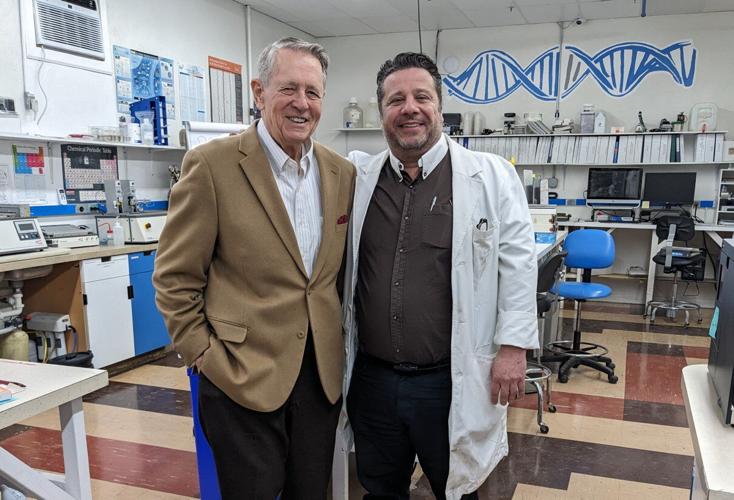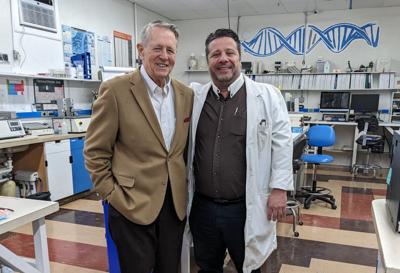JACOBUS, Pa. — Startup company AptAvian is working to detect avian influenza in the air as a first step toward treating the disease.
That’s just the beginning, though. George DeVaux, president of AptAtivan, and Thomas Caltagirone, CEO of partner business Aptagen, see the technology aiding other animal illnesses and possibly human health.
“Our strategy was to go pick low-hanging fruit. By that, I meant get things that are easy to do, and that meant going for animals first rather than humans first,” DeVaux said. “So it’s animals first, and it’s detection and quantification for us before you get into therapeutics.”
The companies’ technology could detect the avian influenza virus three to 11 days before symptoms showed up in birds, DeVaux and Caltagirone said.
But the company has two hurdles to get over before real production can begin — funding and existing rules.
DeVaux is looking for investors, grants and other partnership opportunities. He’d also like to secure federal funding, eyeing the Defense Advanced Research Projects Agency.
But regulation is more difficult. When avian influenza is detected in poultry, all flocks on the farm are depopulated.
“All you get for the farmer, what he would save by having the detection, is he would save the two or three days of feeding of the chickens before they all started dying,” DeVaux said.
He wants depopulation to be limited to only the initial infected house.
It’s not clear if that strategy would be effective.
A smoke bomb test performed on a poultry farm showed the smoke traveled from one house to the next and so on, said Gregory Martin, Penn State Extension poultry educator.
He assumes the avian influenza virus travels similarly.
“That (AptAvian technology) would be fair warning, but I think the same outcome would happen, though,” Martin said. “If the farm is positive, then of course they would be able to eradicate the farm before it spreads even further. But that’s interesting.”
Getting changes passed could require evidence of feasibility for multiple steps of the project — up through treatment — before any technology would go to market, DeVaux said.
The Science Behind It
Aptamers are single-stranded DNA or RNA molecules that can bind to and alter proteins.
A specific aptamer could be used in a device that would produce an alert if the targeted disease was detected.

This machine in the AptAvian/Aptagen lab in Jacobus, Pa., contains the four sugars of DNA and can assemble new strains. Photo taken March 26, 2024.
For treatment, the aptamer could be fogged into a house and inhaled by the birds, DeVaux said. Aptamers could bind to the avian influenza virus’s proteins, neutralizing the disease.
Testing for aptamer treatment was performed by a business partner that used swine and porcine reproductive and respiratory syndrome.
“They showed symptoms of the disease, but they recovered very promptly, so it clearly shows its effectiveness,” DeVaux said.
That trial was small and has no Food and Drug Administration support.
While the numbers are for swine, not chickens, trials indicate treatment could be performed with small doses of aptamers. Fifteen milligrams could treat 300,000 pigs, DeVaux said.
That project is on hold until funding is secured. Caltagirone would then need four to six months to develop the aptamer.
The aptamer could then be integrated into the detection device and sold, DeVaux said, since no FDA approval or field testing is required for detection unless it is to be used for veterinary purposes.
If the company ends up expanding to other species and diseases, Caltagirone would need four to six months to develop a new aptamer, but the detection device would remain the same.
The monitoring systems would come in both a house version and a handheld system for work in the field, depending on detection level and air dilution.
With federal funding, DeVaux said he would build a laboratory to study disease spread and test the aptamer technology.
“Then you do another study. They put in a sick chicken, see if you can detect it,” DeVaux said. “As soon as you can detect it, you start treating them, and if you can demonstrate the treatment works, then you have a winner.”



